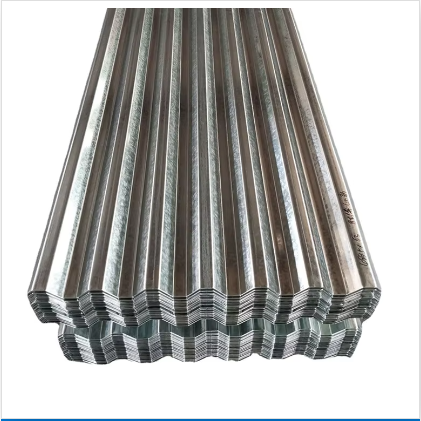Карбон шығындары цемент өндірісінде Жергілік панелдері
Кальцинация процесі және CO2 шығу
Кальцинация процесі цемент өнімдеуіндегі карбондық шығындарға негізгі қосылғыш екенін білдіреді, барлық шығындардың жалпы санының тәжірибелік 60%-ін қамтиды. Бұл процесте кальцит (кальций карбонаты) қорытындысында кальций оксидіне айналдыру үшін іскі жұмсақты ыстыра отыр, мұндағы соңғы нәтиже сіркеуі аертастағы парлардың көлемін арттырудың маңызды себебі ретінде есептеледі. Бұл химиялық реакция атмосферадегі қысқаулардың парларының қосылуына үлес қосады және бұл шығындарды қаптамалау мен азайту стратегияларына қажеттілікті анықтайды. Әлемдегі климаттық өзгерістерге дайындық өсуімен бірге, кальцинация процесінің қызметін жоғары деңгейде болуы маңызды. Бұл кезде CO2-дың кіші шамада шығуы мүмкін болатын өзгертілген қырық материалдарды пайдалану сияқты әдістер қолдануы мүмкін, осылайша цемент өнімдеуінің ең қоршаған қоршаған қадамын азайтуға көмектеседі.
Энергияға ұшас құрылғы операциялары
Цемент жасау процесіндегі султа операциялары өте көп энергия салынғысымен танымал, бұл операциялардың көбіне қарағаздан қатынас пайдалану арқылы қысқа газдарыңыз өсуіне себеп болады. Бұл операциялардың энергиясына қатысты талаптар карбон отбасын бір тонна цемент жасау үшін 800 кг CO2-ден астам болуы мүмкін. Бұл есепті шешу үшін возобновляем энергия деректеріне өту маңызды. Султа операцияларына биоэнергия немесе солнық энергиясын қосу арқылы біз шығындарды қалаймыз, сонымен қатар тұрақты жаңа өнімдерді жасау әдісіне қол жеткізу мүмкін. Сонымен қатар, бұл өту әлемдік ортаға қызмет етеді және цемент жасаушыларын тұрақты өнімдерге қатысты индустриялық практикаларда жетекшілер ретінде табысады.
Возобновляем энергиялардың интеграциясы арқылы шығындарды кеміту
Цемент өндірісінде қайта пайдаланылатын энергия және келесі 30% операциялық шаруашылықтарды кемітуге мүмкіндік беретін тұрақты қоршаған қолдануы мүмкін. Соларлық термал және биомасса технологиялары цемент өндірісін өңдеу үшін ұзақ уақытқа дейінгі шешімдерді ұсынады. Көптеген практикалық тtéбірлер цемент жабдықтарының қайта пайдаланылатын энергия стратегияларын қолданудың әсерлі болғанын, олардың карбон шаруашылығын азайтуын көрсетеді, бұл индустриядағы өзгерістердің символдары болып табылады. Бұл мысалдар содан өте, өңдеулердің мүмкіндіктерін көрсететінdek, дамуына әлемдік қоршаған сақтау үшін маңызды ұстаз етістіктердің кеңінен қолдануын қосымша риза етеді.
Су тіркесімен және ресурстарды алу әсерлері
Цемент өндірісінде суға ыстық талап
Цемент өндірісі суға байланысты, бірақ оның күштілігі туралы мәліметтерге сәйкес, әдетте 1 тонна цемент өнімдері үшін 1.5 куб метр сұлу қолданылады. Бұл маңызды пайдалану, жылдамдықпен су елеулілерінде ресурстардың тез қиындауына себеп болады. Су цемент өндірісінің көптеген араларында маңызды рөл атқареді, сонымен қатар, арнайы жұмыстар, суықтыру және су арқылы шыңдау процестерінде де қолданылады. Цементке қатысты талаптар өсіп жатқанда, осы пайдаланудың қоршағанындағы тәсірлерін шешуге тырысып отыр. Жабдықтағы суға қайта қолдану және жаңа су пайдаланудың минималаштыруы, ұран-сыйымдарды жетілдіру мен су пайдалануды кеміту үшін маңызды.
Қоспа жумыстары және экологиялық тәсір
Цемент өндіруі үшін агрегаттарды шығару экологиялық жағдайға әсер етуі мүмкін, бұл өсім кезеңдерінің тиесіздігі, земекөршілік және биоәуелділікке айналуындағы кемулерге себеп болуы мүмкін. Бұл экологиялық мәселелер маңызды май жобаларының жақсы басқарылмағанына байланысты, сонымен қатар экосистемаларға қайта қалпауыз қауіп беруге мүмкіндік береді. Биоәуелділікке қарсы қорғау уақыттық қалалардың кеңейуінің орналасуымен бірге артады, бұл өмірбаян қалаларға мəншік қалған жерлерді шектеуді нәтижелейді. Бұл қорқымдардың ішінде, регулациялау органдары мағаны рұқсаты беру бұрынгы экологиялық бағалау жүргізу үшін табыс тапсырмаларын қамтамасыз етуді ұсынады. Сондай-ақ, бұндай бағалау экологиялық қауіптерді кеміту және биоәуелділікке айналуындағы кемулерді кеміту үшін ұранды қолдау практикасын қабылдауға көмектеседі.
Өндірістік аймақтарда су тәрбиесін қалайту
Қарағат жасау құрылғылары, су егізінен және су бос болуға қарсы қаланған аудандарда көбінесе су стрессімен қатарлы проблемаларға қарşı түседі. Бұл мәселелерді шешу үшін өндірістік практикалардың қамтамасыз етуі тиіс, оның ішінде ұран-қоршаған және ресурстардың қызметкерліктігін қамтамасыз ету. Су басқару қоғамдарын қолдану маңызды; бұл қоғамдарда су көзін қорғау үшін буфер зоналарын құру және сұйындығын азайту үшін стратегияларды қабылдау келеді. Сонымен қатар, ғанау суын жинау системасына сауда жасау арнайы ресурстарға қол жеткізу мүмкіндігін береді, бұл корпоративтік жауапкершілікке және топтастық қатысуға сайлауға мысал болады. Бұл жұмыстар не тек су стрессін азайтады, бірақ қауіпкен аудандарда ұран-қоршаған өндірістік практикаларға қатынастырады.
Барлықтымен бірге, цемент және бетон өндірісінің қоршағанына қатысты шешімдерді зерттеу кезінде, олардың інициативалары құрағыздағы практикаларды дамыту үшін негізгі. Көрсеткіштік басқаруды жақсарту арқылы және экологиялық тенгеуді кеміту арқылы сектор қоршаған егіздерін кеміту қадамдарын қабылдауға болады.
Биологтық түрлердің санының кемуі мен шағын қала жылуы ефекті
Қалаға айналу арқылы туындағылардың бөлінгендігі
Қалашастаның кеңейілуі әрекеттік түрде бастықтың бөлінгеншілігін жауапкершілікті арттырады, ол өсімдіктерге миграциялау арасындағы жолдарын ашуға тырысып, тұрақты боламайтын жерлерге өтуге мүмкіндік бермейді. Егер үздік земеке бетон қойылса, онда ол шынымен қарсы түрде қалыптастырылған бетондық қаттармен ауыстырылады, бұл экосистемаларды ұнтқытады және өсімдіктерге қараңғы жергіліктер қалайды. Бұл жер ауыстыруы биодIVERSITYға сеп-сегіз әсер ететін мәселелерге сай келеді. Статистика сипаттайды: қалалық теріс әлемінің бірнеше метрополитен аудандарында өсімдіктердің бастықтарының 25%-тен астам қалып отыр, бұл биоғылымды сақтау мақсатында қалалық план бойынша ұйымдастыруға қажеттілік береді.
Бетон температураның көбейуіндегі әсері
Бетондық бөліктер ыстықты салып, оны ұстауға мүмкіндік беретін жерлер ретінде белгілі, бұл қала ыстық аралығы еффектіне қолдаңғыз қосады. Бұл еффект қала ішіндегі температураларды қорғандағы аймақтардан 1-3 градус арттыра алады, сонымен қатар суықтау мақсатында энергия пайдалануды арттырады. Қала дизайнында қайта отырғызаушы материалдар мен зелені көше табанын қолдану қажеттілігі артты. Зерттеулер бейне қала аяғындағы өсімдіктерді қосу температураларды әсерлі түрде төмендетуге болатындығын көрсетеді, бұл қалалық аяқтағы жылысын жақсылауға және суықтау системасынан шығатын қысқа қазандардың шығындығын кемітуге көмектеседі.
Жергіліктік плита инфраструктурына зелені аяқ қойу
Қалдықтарға парктер мен бахчелер сияқты өсімдік аралықтарды қосу биологикалық түрлердің кемуін азайтуға және экологиялық теңсіздікті қалыптастыруға мүмкіндік береді. Инновациялық емек емес дизайндары өсімдіктерді қамтамасыз етуді қамтиды, бұл жеңіл су басқаруын және шынықтықтың қабылдымын азайтуға мүмкіндік береді. Зерттеулер бейне, зеленік инфраструктурасын қолданатын қалаларда температуралар кеміді және бірліктердің ішіндегі жақсы болуы жоғары деңгейде болады, бұл да қалдық өзгертуде зеленік аралықтардың маңыздылығын көрсетеді. Экологиялық қарым-қатынастармен инфраструктура құрастырудың мақсаты - цементтік емек емес бойынша қорытындыларды шешуге және қалдықтарда ұрандық қорытындыларды жасауға көмектесу.
Табиғатқа тигісі аз жинақты материалдар Жергілік панелдері
Шашу ағашы және санайлы салықтарды пайдалану
Коал қысымындағы жарық астыны пікірлеу үшін бетон арнайы тікелеріне қолдану, карбон отбасынан тыс жол ашады. Жарық асты цементтің ең көп қатарын өзгертуге мүмкіндік береді, бұл бетон өндіру процесіндегі ең карбондік элемент. Жарық астын қосу арқылы бетон қызметтерін жақсартамыз, сонымен қатар санайлы отбасына үздік шешім беріледі. Зерттеулер бейнелі, жарық астын құрылыс іс-әрекетінде қолдану арқылы емдеу энергиясын 30%-ден астамауға болады, бұл сұрақтық құрылыс практикасы үшін әсеркелі таңдау болып табылады.
Бетон арнайы тікелеріне қайта қолданылатын агрегаттар
Қайта қолданылатын агрегаттарды, бөлімдері топарланған құрылыс жерлерінен алынған, бетон арнайына қосу, жаңа материалдарға талапты кемітуге және қоршаған ортаның сыйлығын азайтуға көмектеседі. Қайта қолданылатын агрегаттармен жасалған бетон әртүрлі зерттеулерде традициональдік бетонға салыстырылғанда, оның қабілеттері теңдей екені дәлелденген. Бұл практика landfill-терді кемітуге қосымша болып, құрылыс соңында қызметкерлікті арттыруға мүмкіндік береді. Құрылыс секторында қайта қолдануды қолдайтын саясаттарды қолдану арқылы, біз ұстамалдық материалдарды қолданудың қызметкерлік экосистемасын қалыптастыра аламыз.
Емисиясын азайту үшін альтернативный клинкер қоспау
Жеке көлемдегі бетон арнайының карбондық қосындысын азайтуда мәңгілік цементтік қоспаларды зерттеу маңызды. Традициялық Портланд цементінен қате материалдарды қамтиды жолдаушы қоспаларға ауыстыру, шығындарды 20-40% азайтуға мүмкіндік береді. Бірақ, осы материалдар туралы білім және саладағы қабылдау, өсімдік құрылғы саласына қарай өту үшін негізгі. Осы альтернативаларды пайдалануды қолдау, бетондың қоршаған қасиеттерін сақтау арасында ортаға қызыл енергиюға айналдыру үшін маңызды.
Тоқыр қауіпсіз құрылғы қырын құру үшін инновациялық әдістер
Карбонды Қабылдау және Сақтау (CCS) Интеграциясы
Карбондық табыс және сақтау (CCS) технологиялары цемент өндірісінен шыққан эмиссияларға күресу үшін құттық аспаптар. Күштік станциялары мен санайлы орындардан 90% эмиссияны табып алғанда, CCS ұзак емес цемент өндірісі үшін негізгі элемент болып табылады, миллион тонна етістіктен астам қалдыру мүмкін. Бірақ, CCS-ны цемент секторында интегралдау қиындықтарынан бас тартпайды. Бұл технологияны әртүрлі пайдалану үшін қажетті құны мен инфраструктура шектеулерін асыру маңызды.
Материалды пайдалануды азайту үшін структуралық дизайнды оптимизациялау
Структурлық дизайнды оптимизациялау, салыстырмалы материал пайдалануды және құрылғы салтындағы атмосферге тигізетін нәтижелерді кемітуде маңызды rol атады. Кеңейтілген моделдеу технологиясын қолдану арқылы инженерлер структуралық барлықты сақтау кезінде қажетті материал мөлшерін кемітуге болады, осылайша құрылғы процесінің карбон интенсивтігін кемітеді. Жеке өмірдеғі қолданбалар күштілікпен тиістілікті кемітпе отырса да, оптималды дизайндар бетон пайдалану мөлшерін 20% есе кеміту мүмкін, сонымен қатар экологиялық құрылғыға арналған түрлі қол жетімді жолдарды көрсетеді.
Шығысқа шығу үшін электр қуатты құрылғы
Электрлық қуаттың баптау жабдықтарына өту, шығыссыз бетон тігейтуге арналған маңызды қадам. Бұл машиналар, күнделік құрылғыларға тәуелсіздігін кемидір және операциялық шығындарды өте көп кеседі, бұл стратегия қоршаған орталықтардың көпшілігінен қоршаған орталықтарға тәуелсіздігін көбейтеді. Зерттеулер байқағанда, электрлық құрылғыларды пайдалану, традиционалды қазан және дизель құрылғыларға салыстырғанда CO2 шығындарын 50%-ке дейін кемітуге мүмкіндік береді, бұдан да сұрақтық құрылғыларда қысқа уақытта қолдану мүмкіндігін бейнелейді.
Сұрақтар мен жауаптар бөлімі
Цемент өндіру процесінде кальцинацияның әсері қандай?
Кальцинация процессі, кальцитті ыстамаға қосымша болу үшін тас құрылғын іскерлеумен өтеді, бұл цемент өндіру кезінде карбон шығындарына үлкен қатынас етеді. Ол шығындардың 60%-ын қамтиды, CO2-ді жарық өнім ретінде шығарады.
Тұрақты қызметтерде шығындарды кему үшін қайталаулы қызмет неге мүмкіндік береді?
Қайта қолданылатын энергия және солар энергиясы сияқты қайта қолданылатын энергия қалыптарын шірке қызметтерінде қолдану, иелердің табиғатты қорықтарға байланысты тәртібіне дейін 30% дейін шектеуге мүмкіндік береді.
Цемент өнімдері су пайдалануына қандай тәсір етеді?
Цемент өндірістері суға көптеген, әдетте 1 тонна цемент үшін 1.5 куб метр су пайдаланады, бұл су аз болатын аймақтарда қиындықтар туғыздайды. Су қайта қолдануы мен жаңа су пайдалануды жеңілдету іске асырулары ұрандылық үшін маңызды.
Қайта қолданылатын агрегаттар традиционалды материалдардың орнына қосымша ретінде қолданылатыны бар ма?
Иә, қайта құрылған құрылғылардан шыққан қайта қолданылатын агрегаттар қосымша ретінде қолданылуда, бұл жаңа материалдарға қажеттілікті және қорғаныс әсерлерін кемиді, ал традиционалды цементпен салыстырғанда тең қызмет етеді.
Қысқырғыш салу әдісі (CCS) технологиясы цемент жасау кезінде шаруашылықты қалай кемиді?
Шаруашылықты Қысқырғыш Салу және Сақтау (CCS) технологиясы өнеркәсіп жерлерінен шыққан шаруашылықтың 90%-ын қысқыртады, цемент жасауға қатысты карбон отбасын азайтуға және ұрандық практикаларға жол ашады.
Мазмұны
- Карбон шығындары цемент өндірісінде Жергілік панелдері
- Биологтық түрлердің санының кемуі мен шағын қала жылуы ефекті
- Табиғатқа тигісі аз жинақты материалдар Жергілік панелдері
- Тоқыр қауіпсіз құрылғы қырын құру үшін инновациялық әдістер
-
Сұрақтар мен жауаптар бөлімі
- Цемент өндіру процесінде кальцинацияның әсері қандай?
- Тұрақты қызметтерде шығындарды кему үшін қайталаулы қызмет неге мүмкіндік береді?
- Цемент өнімдері су пайдалануына қандай тәсір етеді?
- Қайта қолданылатын агрегаттар традиционалды материалдардың орнына қосымша ретінде қолданылатыны бар ма?
- Қысқырғыш салу әдісі (CCS) технологиясы цемент жасау кезінде шаруашылықты қалай кемиді?

 EN
EN







































